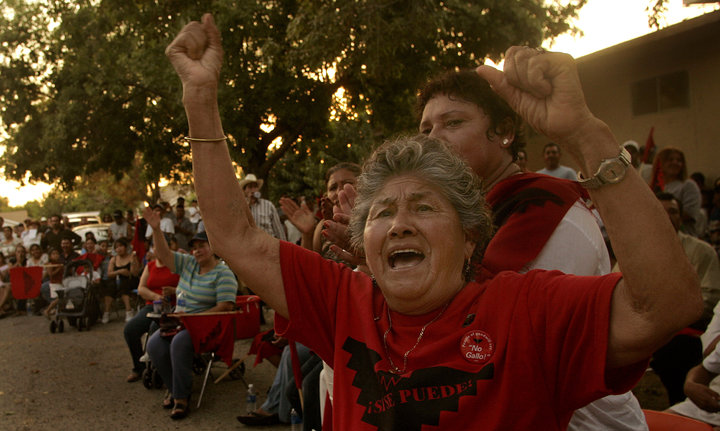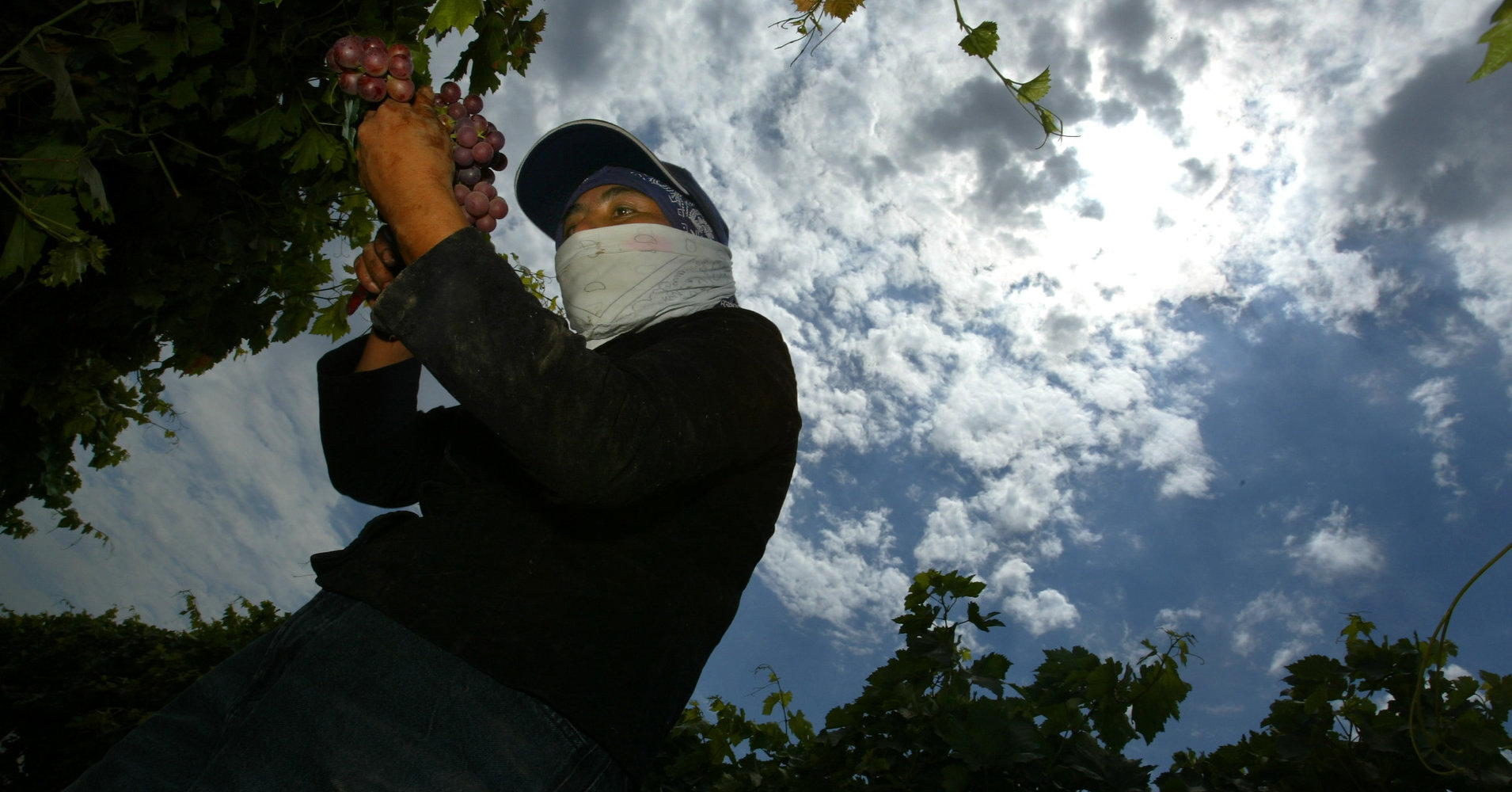[ad_1]
As extreme temperatures exacerbated by a warming planet continue to take a deadly toll on laborers across the country, a coalition of worker advocacy groups is calling on the federal Occupational Safety and Health Administration to create the country’s first national standard for heat stress.
“Deaths and injuries from extreme heat are still too common in states without any protective standards,” said United Farm Workers of America President Arturo S. Rodriguez, who spoke to reporters during a conference call on Tuesday. “Farmworkers are not agricultural implements. They are important human beings who sweat and sacrifice to feed millions of people across America and the world.”
Rodriguez’s organization, along with two former OSHA directors, the nonprofit consumer group Public Citizen, and a broad coalition of more than 130 labor, public health and environmental organizations, filed the petition to Loren Sweatt, the acting assistant secretary of labor for occupational safety and health, on Tuesday.
Without a federal heat stress standard, OSHA relies on a general requirement that employers provide workplaces free of hazards. But as global warming causes more frequent spells of extreme heat and record-breaking summers become the norm, the coalition said employers are falling far short.
“We argue that [the general requirement] is not enough,” said Shanna Devine, a worker health and safety advocate for Public Citizen. “Employers aren’t going to voluntarily implement these common-sense criteria ― access to water, shade and breaks ― unless required to and unless there is likely to be a real penalty.”
Employers aren’t going to voluntarily implement these common-sense criteria — access to water, shade and breaks — unless required to and unless there is likely to be a real penalty.
Shanna Devine, worker health and safety advocate for Public Citizen
The coalition previously petitioned OSHA for a heat stress standard in 2011, during the Obama administration, but the petition was denied. In a 2012 letter, OSHA said the agency already had the ability to cite employers who exposed employees to serious heat hazards and had done so in the past.
“That’s an existing tool, but it’s largely underutilized,” said Devine, noting that there have only been a few hundred federal citations for heat stress over the last several years. “And that barely scratches the surface of the likely number of heat stress-related citations for the country.”
Heat is the leading weather-related killer in the United States. The coalition cited research that found that 2017 was the second-hottest year on record, surpassed only by 2016, and that 17 of the 18 hottest years on record have occurred since 2001.
“As greenhouse gas pollution increasingly warms the planet, the toll that heat takes on workers is rising,” the coalition stated in a release.
On Tuesday, Rep. Judy Chu (D-Calif.) announced that she plans to introduce federal legislation directing the federal government to develop heat protection standards, including requirements that employers provide safe workplaces with water, rest and shade.
“We know that our workers deserve access to a safe workplace,” said Chu during the conference call on Tuesday. “Unfortunately, far too many employers don’t provide these simple steps for workers who are employed outdoors.”
While Chu was in the California Assembly more than a decade ago, she sponsored a heat illness standards bill to protect workers from excessive heat on the job and helped pressure then-Gov. Arnold Schwarzenegger (R) to issue the first permanent heat regulation in the nation. Since then, Washington state has implemented heat stress standards for outdoor workers, and Minnesota has created protections for indoor workers.

Richard Hartog/Getty Images
During the conference call, California resident Raudel Felix García described learning in 2008 that his brother, Audon Felix García, had died after loading grape crates onto a company truck during triple-digit temperatures in California.
“It was hard to believe that he was simply gone,” said García, noting he had seen his brother five days before his death and that he was healthy and ready to start another harvest season.
García said his brother and his co-workers had not received heat safety training or guidance on how to respond to heat illness.
“A decade after my brother’s death, workers continue losing their lives from heat illness,” said García. “I don’t want any more families to go through the pain that my family went through.”
The coalition is calling for a standard modeled after criteria set by the National Institute for Occupational Safety and Health (NIOSH), a federal agency that conducts research on work-related injury and illness. Since 1972, NIOSH has issued three reports outlining criteria for a recommended national standard to protect workers from heat exposure. Despite this, OSHA has never created a federal standard.
Among the elements that the coalition recommends including in a national standard are mandatory rest breaks, access to shade and water, a plan to acclimate workers to high-heat environments, and training on how to prevent and respond to heat stress injuries.
Farmworkers are not agricultural implements. They are important human beings who sweat and sacrifice to feed millions of people across America and the world.
United Farm Workers of America President Arturo S. Rodriguez
NIOSH estimates that 2 in 1,000 workers are at risk of heat stress and that people in certain occupations, such as firefighting, agriculture and construction, are at even greater risk. That means there are some 300,000 American workers currently at risk of heat stress, according to the petition.
A recent study of OSHA heat enforcement cases conducted by OSHA’s Office of Occupational Medicine and Nursing found that under the current federal regulations, most employers have not only failed to implement basic elements of heat illness prevention programs but have also failed to use standards established by other government agencies.
“The available evidence indicates that an extraordinarily high percentage of occupational heat stress fatalities occur in workplaces that lack the protections that NIOSH recommends,” the petition concluded.
The coalition also plans to launch a public awareness campaign about how rising temperatures affect vulnerable populations.
Jeannie Economos, who works as pesticide safety and environmental health project coordinator for the Farmworker Association of Florida, emphasized the importance of federal protections while describing how at least three farmworkers have died from heat stroke in Florida in the last few years.
Long hours in the field can leave farmworkers feeling dizzy and nauseated, she said, and can lead to heat stress, heat stroke and even death. Other workers risk long-term kidney damage or disease from chronic dehydration.
“Climate change is real, and the people who harvest our food are feeling its impacts on their bodies every day,” said Economos. “This is a public health issue; this is a justice issue.”
[ad_2]
Source link

